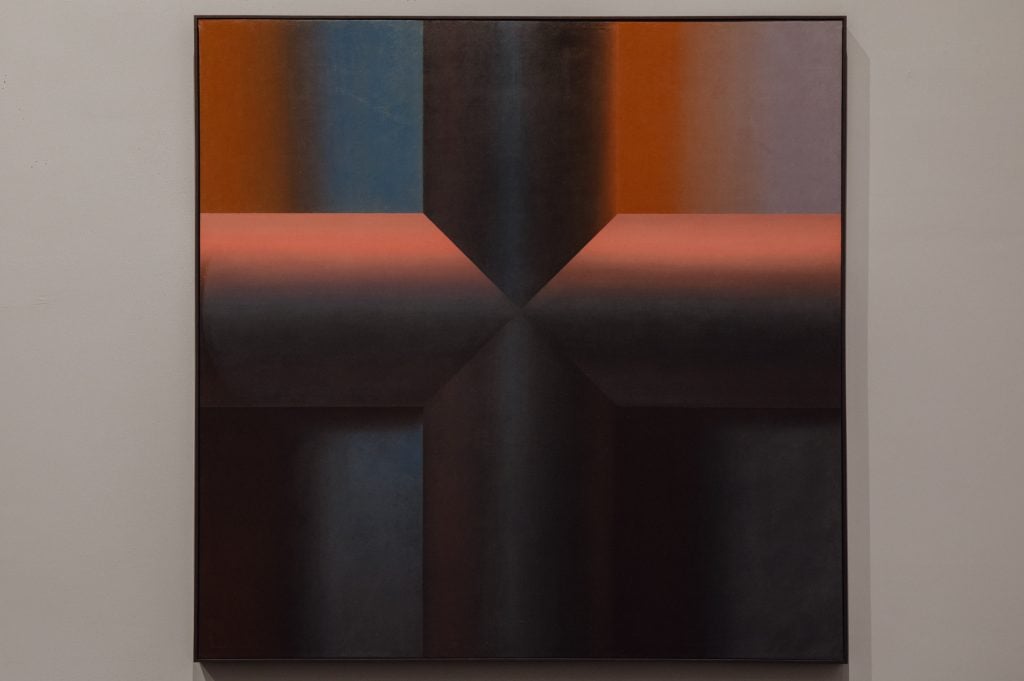
23 Dec 7 Breakout Artists from the 2024 Venice Biennale
Source Credit: Content and images from Artnet News. Read the original article - https://news.artnet.com/art-world/venice-biennale-breakouts-2566152
They don’t call the Venice Biennale the art-world olympics for nothing. Even making it to half of the pavilions and collateral exhibitions is a serious feat of endurance and every art lover leaves La Serenissima regretting the many headliners and hidden gems that they somehow missed.
But there is one show that everyone pays attention to. The Biennale’s main exhibition sets the agenda in the art world, and this year’s curator Adriano Pedrosa didn’t disappoint with his mammoth selection of 331 artists from across the globe under the conversation-starting theme of “Foreigners Everywhere.”
The Venice Biennale’s first Latin American curator, Pedrosa clearly stated that his aim was to spotlight historical and living artists who have been unfairly marginalized and treated as outsiders, with a particular emphasis on queer artists and those from the Global South.
“I thought about the Biennale quite strategically,” he told Artnet News ahead of the show’s opening. “What I’m trying to do is almost a speculative curatorial exercise. It hasn’t really been done. It’s a draft, it’s an essay, it’s a provocation.”
Now that it has come to a close, a few artists have emerged as this year’s breakout stars. Here are seven names we expect to hear a lot more frequently over the coming years.
Samia Halaby

Samia Halaby, Black is Beautiful (1969) in the “Foreigners Everywhere” main exhibition at the 60th Venice Biennale. Photo: Matteo de Mayda, courtesy La Biennale di Venezia.
Known for lively, colorful abstractions, Palestinian-American artist Samia Halaby was the subject of international headlines at the start of 2024 with the shock cancelation of her retrospective at Indiana University’s Eskenazi Museum of Art amid heightened tensions around conflict in Gaza. PEN America called it an “alarming affront to free expression.” It was followed by a suite of high-profile institutional moments for Halaby, including a spot in “Foreigners Everywhere.”
A sister retrospective at Michigan State University’s Broad Art Museum went ahead as planned and the artist also participated in the 15th Havana Biennial (until February 28) with a new painting Organize, Reorganize, Build, Win and four historical works from her lesser known, experimental digital art practice. Similar examples of her digital works were included in two major international group shows: MUDAM Luxembourg’s “Radical Software: Women, Art & Computing 1960-1991,” which closes February 2, 2025, then travels to Kunsthalle Wien in Vienna, and “Electric Dreams,” at Tate Modern in London, which runs until June 1, 2025.
Prices for Halaby’s canvases have routinely soared past their high estimates at auction, most recently during the Modern and Contemporary Middle Eastern Art sale at Christie’s London on October 31, with two paintings fetching £233,100 ($299,691) and £138,600 ($178,194). Her auction record stands at £400,000 ($533,974) for Mediterranean #279 (1974), which sold in an online sale at Christie’s in 2020.
Leilah Babirye
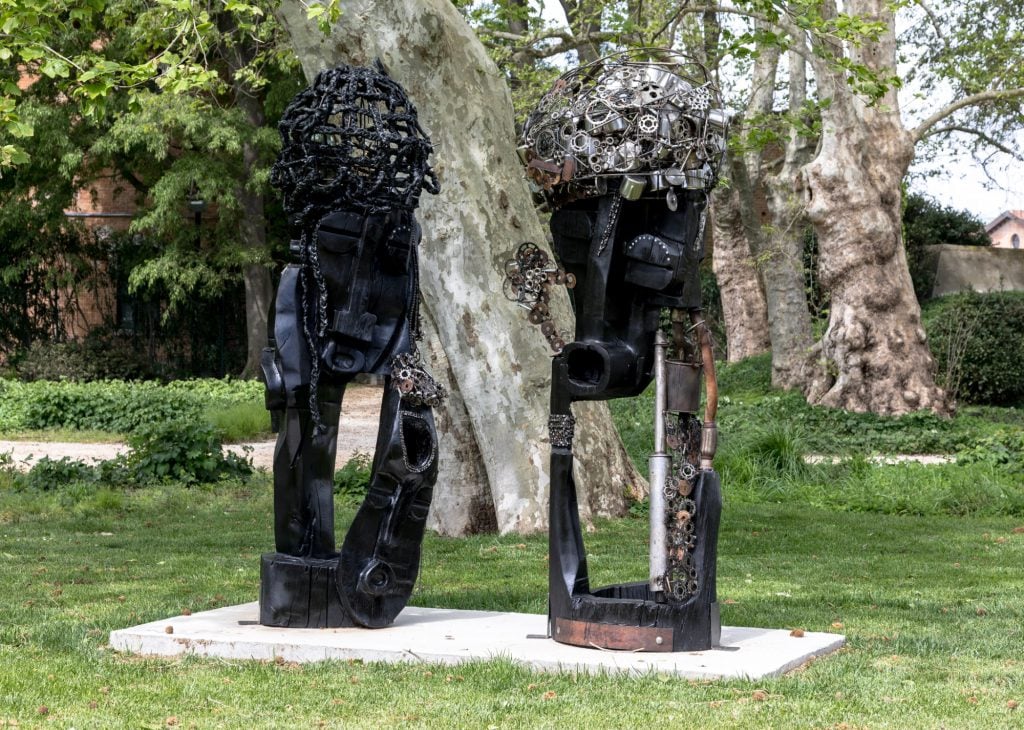
Sculptures by Leilah Babirye (2023-24) in the “Foreigners Everywhere” main exhibition at the 60th Venice Biennale. Photo: Marco Zorzanello, courtesy La Biennale di Venezia.
Leilah Babirye fled her home country of Uganda in 2015 due to LGBTQ+ persecution. Since then, she has been steadily building a profile in her adopted city of New York, known for her hand-carved wood sculptures inspired by African masks and the gender fluidity of Dogon ancestral figures. Babirye was just breaking onto the international scene with a feature in last year’s Frieze Sculpture in London when a group of her stylized monuments became eye-catching centerpieces in the gardens of “Foreigners Everywhere.”
Simultaneously, Babirye took over the Chapel gallery at Yorkshire Sculpture Park (YSP) in northern England over the summer with her first major solo museum show “Obumu (Unity).” These portraits of members of the queer community, adorned with found material like wire and bicycle chains, were made during a residency at YSP over the summer of 2023.
Back in the States, “We Have a History,” on view at the de Young in San Francisco until October 26, 2025, is her biggest institutional moment to date in the U.S. Once again the artist draws from heritage and experiences living in exile, pairing 12 of her sculptures with works from the de Young’s historical African Art collection that Babirye had a hand in selecting.
Emmi Whitehorse
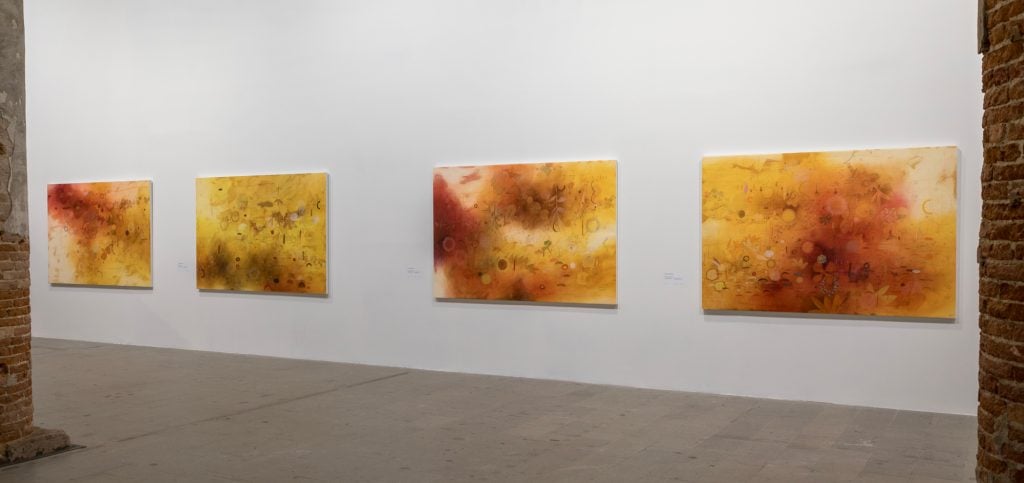
Works by Emmi Whitehorse in the “Foreigners Everywhere” main exhibition at the 60th Venice Biennale. Photo: Marco Zorzanello, courtesy La Biennale di Venezia.
Emmi Whitehorse, a Diné (Navajo) artist from New Mexico, is known for large semi-abstract canvases in shades of red and burnt ochre or murkier shades of purple, green, and blue that peppered with subtle, enigmatic gestures. They are heavily inspired by the landscape in which she grew up, as well as the traditional Navajo weaving techniques she observed from her grandmother.
Whitehorse has been exhibiting for decades, predominantly in the U.S. southwest, including the Yuma Art Center (1988) and Tucson Museum of Art (1997) in Arizona and Boulder Museum of Contemporary Art (2006) in Colorado. In recent years, she was included in exhibitions at the Whitney Museum in New York and the National Gallery of Art in Washington, D.C. With a strong focus on Indigenous art in “Foreigners Everywhere,” Whitehorse is now on the international stage.
She has also caught the eye of keen collectors. In May, Whitehorse set a new auction record at $177,800 at Phillips New York for Canyon Lake I (2001), which attracted a bidding war among eight potential buyers from four countries. The winner was a private European collector. All of Whitehorse’s top nine auction prices were all achieved in 2024, whereas before 2022 her auction prices topped out at just over $6,000.
Louis Fratino
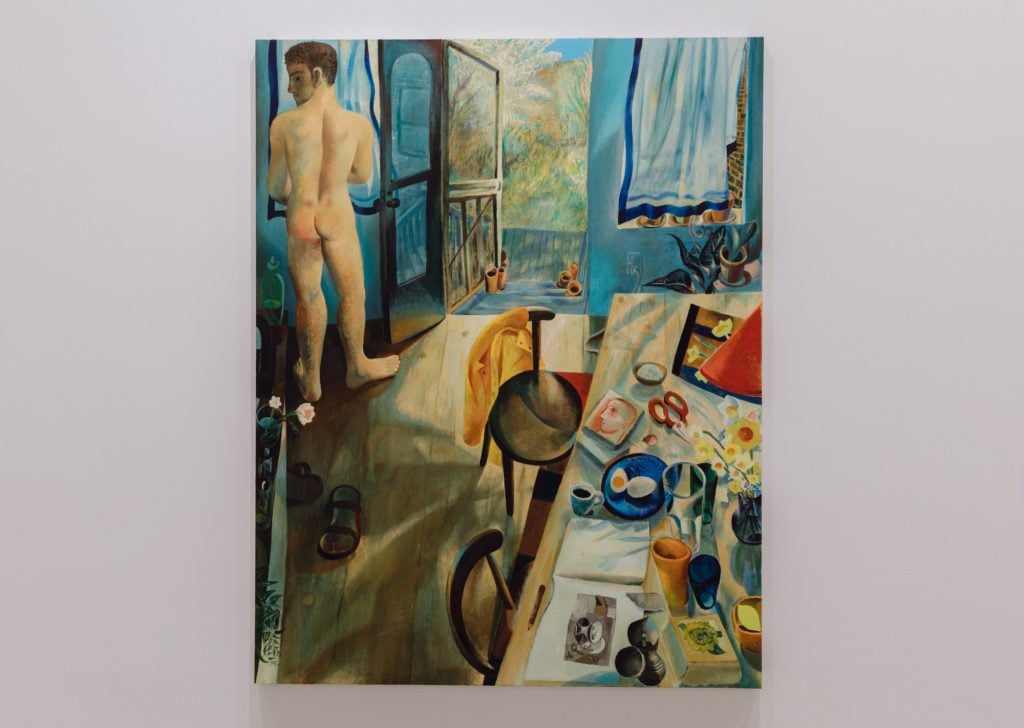
Louis Fratino, April (after Christopher Wood) (2024) in the “Foreigners Everywhere” main exhibition at the 60th Venice Biennale. Photo: Matteo de Mayda, courtesy La Biennale di Venezia.
A suite of paintings by Louis Fratino proved to be an eye-catching highlight of the central pavilion of “Foreigners Everywhere.” It’s easy to see why from just a cursory glance at his inviting and charmingly detailed interiors, sensitive portraits, bustling bars, and homoerotic nudes. Having only recently turned 30, the artist was a fresh-faced addition to a roster of artists that otherwise skewed older than the Biennale’s main exhibition has in recent years.
The artist’s triumph in Venice has been followed up with a solo show at Centro Pecci Prato in Tuscany, until February 2, 2025. This year his work has also featured in group exhibitions at Kunsthal KAdE in the Netherlands and Long Island Museum in New York.
The fast-rising, ultra-contemporary star was already been turning heads at auction even before the Biennale, setting his all time record of $730,800 at Sotheby’s New York in 2022. His secondary market prices have held steady through the market downturn of the last two years—during which time ultra-contemporary prices have fallen sharply—with one canvas fetching $504,000 at Christie’s New York in May 2024, shortly after the Biennale opened.
Karimah Ashadu
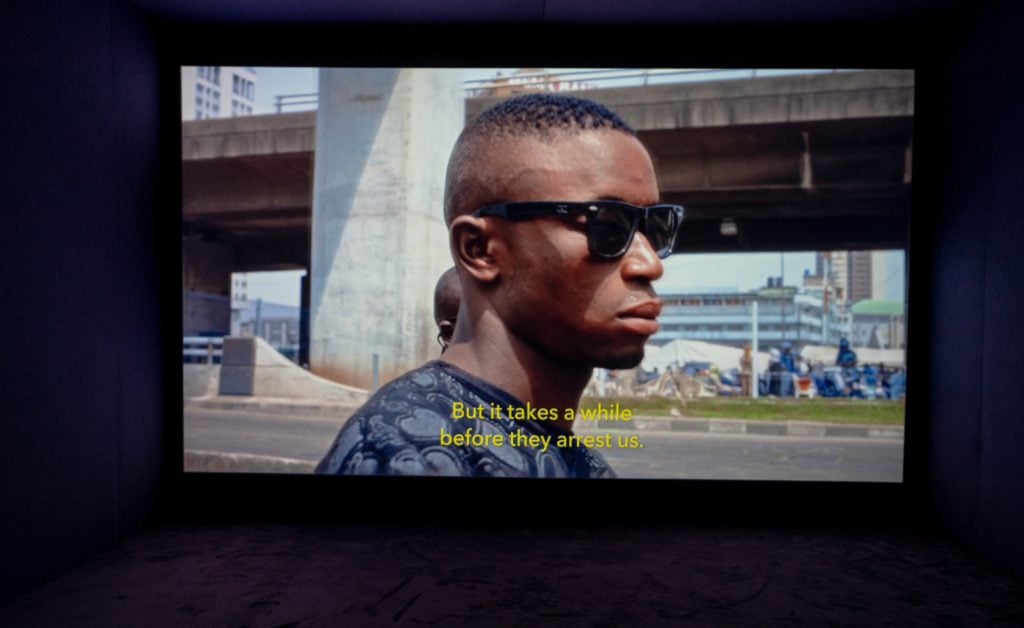
Still from Karimah Ashadu, Machine Boys (2024) in the “Foreigners Everywhere” main exhibition at the 60th Venice Biennale. Photo: Andrea Avezzù, courtesy La Biennale di Venezia.
The Biennale’s coveted Silver Lion award for a promising young participant in its main exhibition went to Karimah Ashadu, a British-born filmmaker who was raised in Nigeria and now lives in Hamburg. She was praised by a juror, Indonesian curator Alia Swastika, for her “sensitive and intimate” video Machine Boys and related brass sculpture, Wreath, a project that “upends gendered assumptions about the gaze and what is considered proper to commemorate.” The film follows a community of young migrant men in Lagos who ride illegal motorbike taxis, recording their subcultural experience as well as economic precarity.
It appears the wider community of top curators was also paying attention to Ashadu, with Camden Art Center in London recently announcing her first institutional solo show in the U.K. planned for fall 2025. A new film will be commissioned by the center and Fondazione In Between Art Film.
Meanwhile, Machine Boys has been sent on a world tour in 2024, with appearances at Du Réel Festival in Switzerland, the 62nd New York Film Festival, the 2024 International Documentary Film Festival Amsterdam, Rencontres Internationales Paris/Berlin, and the 13th Athens Avant-Garde Film Festival. She made the film over several years, telling Brooklyn Rail this year, “whenever you meet people that you want to work with, you have to build a relationship with them. They have to trust you. They’re inviting you into their lives. You’ve got to respect that. So I spent a while building those relationships.”
Pacita Abad
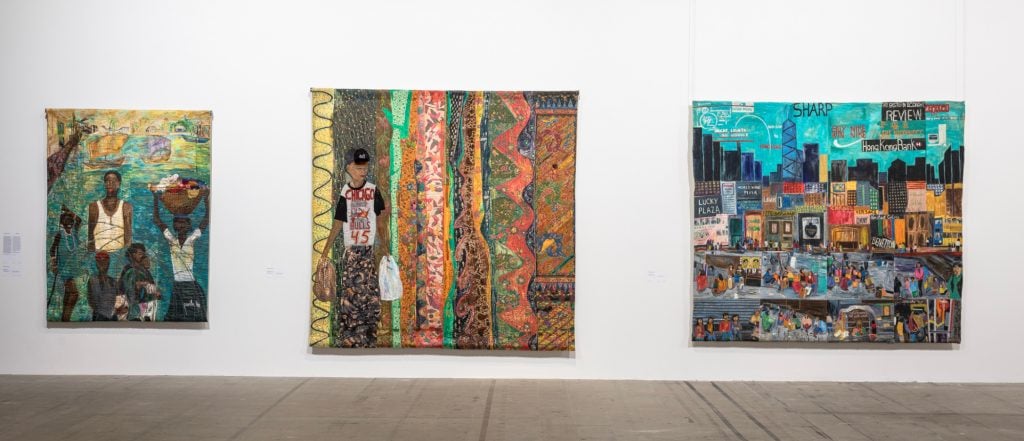
Three textiles by Pacita Abad (1994-95) in the “Foreigners Everywhere” main exhibition at the 60th Venice Biennale. Photo: Marco Zorzanello, courtesy La Biennale di Venezia.
Two decades after death in 2004 at the age of 58, there has never been more belated attention paid to Filipino-American artist Pacita Abad, one of Pedrosa’s historical heroes who he sought to bring to light with “Foreigners Everywhere.” During her lifetime, Abad was frequently exhibited at major museums in Singapore, Indonesia, and the Philippines, and this trend carried on after her death until 2020, when she was exhibited at Spike Island in Bristol, England, Tate Liverpool, and at the 11th Berlin Biennale.
This international debut introduced the world to Abad’s trapunto paintings, often described as quilted canvases, that are filled with lively figurative compositions in kaleidoscopic color. It was followed by shows at Haus der Kunst in Munich and Jameel Arts Center in Dubai in 2021, Walker Arts Center in Minneapolis and SFMoMA in 2023, and MoMA PS1 in 2024, coinciding with the Biennale. The Walker Arts Center retrospective also travelled to the Art Gallery of Ontario, where it remains on view until January 19, 2025.
“She’d be jumping out of her grave to see paintings [of hers] being sold to museums, and at big prices,” her widower, Jack Garrity, told Vogue. “She wanted lots of people to see her work. That’s one of the reasons I think that she painted so big—because they were meant for institutions”
Liz Collins
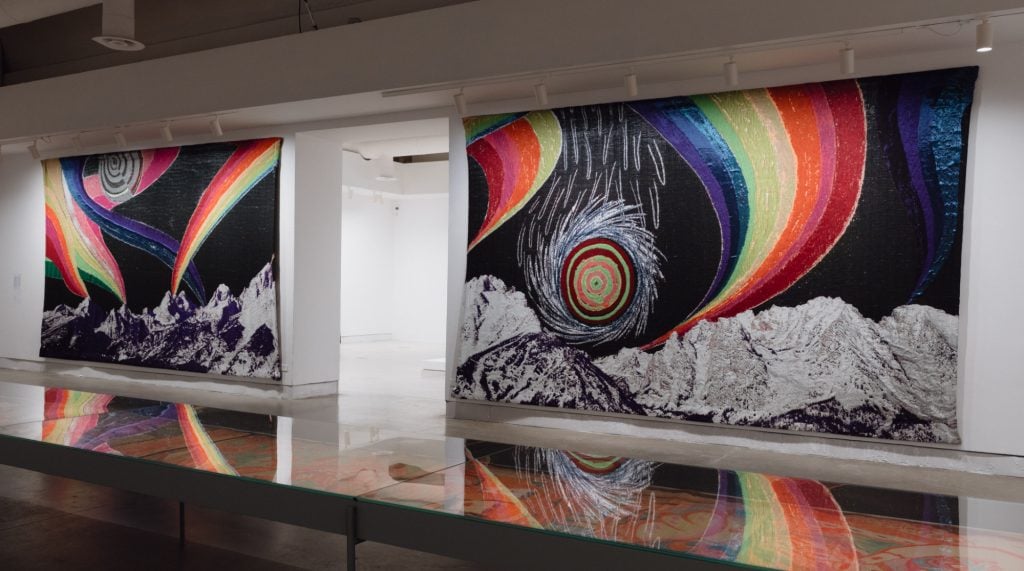
Two Liz Collins woven textiles from “Rainbow Mountains” series in the “Foreigners Everywhere” main exhibition at the 60th Venice Biennale. Photo: Matteo de Mayda, courtesy La Biennale di Venezia.
Also presented on a mammoth scale at “Foreigners Everywhere” were monumental textiles by the Brooklyn-based Liz Collins, who for many years was best known for her fashion label producing knitwear. She described her new works as fantastical cosmic landscapes filled with mountain ranges and rainbow rivers that flow like ribbons around a psychedelic moon. “It’s a story about environmental peril and queer utopia that’s always somehow out of reach and far away,” she said.
Collins has enjoyed a string of regional shows in the U.S., including at the Knoxville Museum of Art in Tennessee and the Tang Museum in Saratoga Springs, New York. This year, however, she was included in the landmark “Woven Histories: Textiles and Modern Abstraction” historical survey, which positioned her alongside legends like Anni Albers, Rosemarie Trockel, Sheila Hicks, Sonia Delaunay, and Sophie Taeuber-Arp.
It debuted at the Los Angeles County Museum of Art in the fall of 2023 before touring to the National Gallery of Art in Washington, D.C. over the summer. It is currently on view at the National Gallery of Canada in Ottawa through March 2, 2025 and is finally set to open at MoMA in New York in the spring.
Source Credit: Content and images from Artnet News. Read the original article - https://news.artnet.com/art-world/venice-biennale-breakouts-2566152

